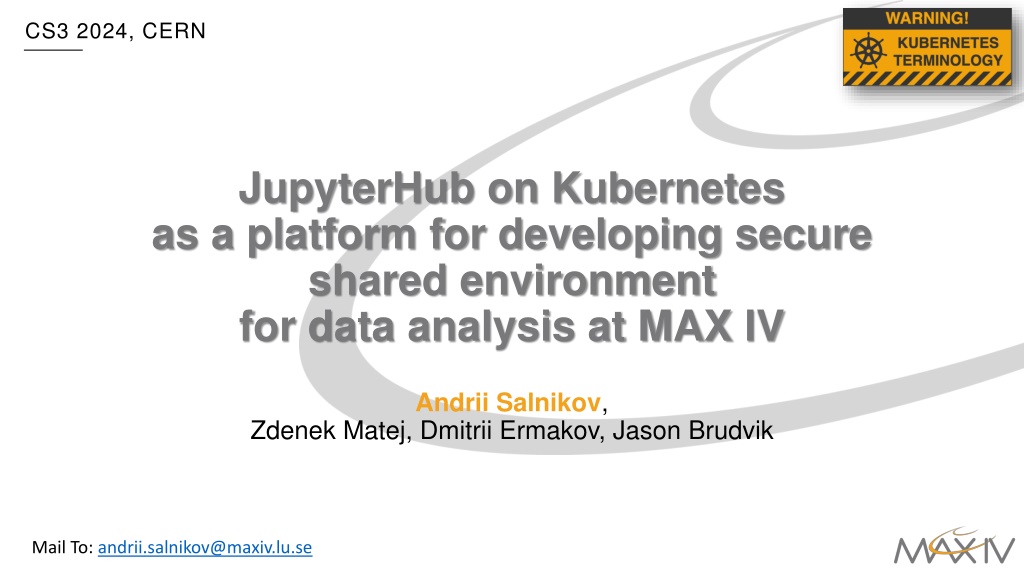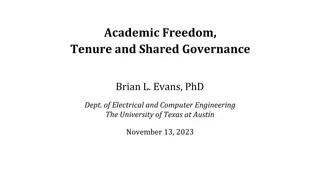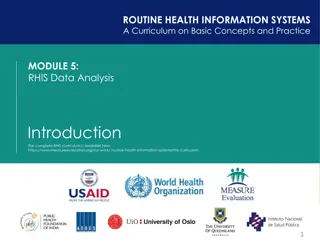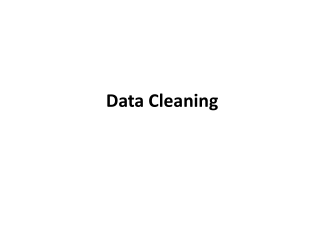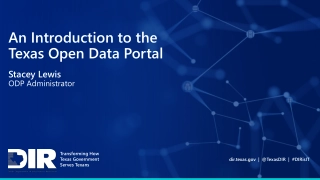Secure Shared Data Analysis Environment on Kubernetes at CERN
Develop a secure shared data analysis environment at MAX IV using CERN JupyterHub on Kubernetes. Utilize container images with custom kernels and manage resources efficiently, including GPU sharing. Integrate with existing LDAP credentials for seamless operation. Follow operational requirements with zero to JupyterHub setup and efficient user resource visibility. Achieve fully unprivileged container environment with functional requirements met successfully.
Download Presentation
Please find below an Image/Link to download the presentation.
The content on the website is provided AS IS for your information and personal use only. It may not be sold, licensed, or shared on other websites without obtaining consent from the author. Download presentation by click this link. If you encounter any issues during the download, it is possible that the publisher has removed the file from their server.
Presentation Transcript
CS3 2024, CERN JupyterHub on Kubernetes as a platform for developing secure shared environment for data analysis at MAX IV Andrii Salnikov, Zdenek Matej, Dmitrii Ermakov, Jason Brudvik Mail To: andrii.salnikov@maxiv.lu.se
Interactive data analysis environment Container images with pre-defined and custom kernels Kubernetes cluster as a resource pool: Moderate CPU Large RAM V100/A100 GPUs as a deployment platform: review/prod/next lifecycle CI testing of notebook images as a runtime environment Shared service for staff and researchers Remote-desktop style experience Resources overcommit Andrii Salnikov, JupyterHub@MAX IV, CS3 2024 2
Goals and technical requirements Key objective: fully unprivileged container environment that operates seamlessly with existing LDAP user credentials Functional Requirements: Integration with MAX IV storage systems (home, group, data) Run any notebook imageswithout modifications Ensure available resources visibility Efficient sharing of available GPU resources between users Observability of usage metrics Operation Requirements: Zero to JupyterHub with Kubernetes Helm Chart without modifications Just custom hooks and proper values.yaml Andrii Salnikov, JupyterHub@MAX IV, CS3 2024 3
Existing LDAP credentials UID/GIDs from Token to securityContext NSS data sync from LDAP to configMap to mount inside container Environment variables to define HOME directory, etc Wrapper startup script to bootstrap environment Storage mounts are simply defined in the values. Andrii Salnikov, JupyterHub@MAX IV, CS3 2024 4
LXCFS: Resources visibility LXCFS is a FUSE filesystem offering overlay files for cpuinfo, meminfo, uptime, etc Deployed as DaemonSet on Kubernetes level Visible CPU and RAM container limits Mounted to /proc and /sys in pre_spawn hook Defining additional environment variables in startup scripts Andrii Salnikov, JupyterHub@MAX IV, CS3 2024 5
GPU sharing: MortalGPU development Kubernetes device plugin for GPU memory overcommit, while maintaining allocation limit per GPU workload - the approach used for sharing RAM on Kubernetes. Fork of MetaGPU with development focus on interactive workloads run by mortals (with operations support by mortal admins) Provides: Device Plugin: represent GPU (or MIG partition) with configurable number of meta-devices (e.g. 320 of mortalgpu/v100) Memory enforcement based on the usage monitoring data Kubernetes-aware observability in general and container-scoped resource usage in particular: mgctl tool and Prometheus exporter Andrii Salnikov, JupyterHub@MAX IV, CS3 2024 6
Jupyterhub with MortalGPU Kubernetes DaemonSet GPU RAM resource requests and limits, defined the same way as RAM Multiple MortalGPU resources available (different GPUs and partitions) Wrapper over mgctl to provide nvidia-smi output for container processes only Andrii Salnikov, JupyterHub@MAX IV, CS3 2024 7
Compute Instance profiles and RBAC Andrii Salnikov, JupyterHub@MAX IV, CS3 2024 8
Extra containers = extra features Walltime enforcement KubeSpawner is capable of running additional containers in the user Pod Isolated walltime countdown container terminating user server via JupyterHub API Using the JupyterHub RBAC feature Developed UI extension to show values to end-user Andrii Salnikov, JupyterHub@MAX IV, CS3 2024 9
Use-case: Nordugrid ARC Client PoC: Small grid for transparent HPC usage ARC with OAuth2 JWT tokens auth: Map to self at MAX IV resources Map to pool on external resources Additional challenge: existing data sharing to external sites with JWT auth, following user permissions Idea: use JupyterHub as oidc-agent Andrii Salnikov, JupyterHub@MAX IV, CS3 2024 10
Extra containers = extra features OIDC-agent for ARC KeyCloak Authenticator to refresh access tokens Isolated token-helper container with privileges to read auth_state Using the Jupyterhub RBAC feature API to provide only Access Tokens to JupyterLab container wrapper to use in ARC CLI transparently Andrii Salnikov, JupyterHub@MAX IV, CS3 2024 11
KubePie: sharing existing data over https Idea: own web server for each user with the correct UID/GIDs Sounds crazy? But we do run such Pods for each user in JupyterHub! KubePie is harnessing Kubernetes' scalability and deployment capabilities by running, managing and securing web servers for every user KubePie is strictly relying on OpenID Connect flow or OAuth2 bearer tokens when it comes to the user identification OAuth2 used in ARC PoC for data transfers Claims-based user-mapping during Pod instantiation (admission) Other auth credentials accessible via OIDC: WebDAV with S3-like credentials is implemented as an example Andrii Salnikov, JupyterHub@MAX IV, CS3 2024 12
KubePie: Baking process KubePie@MAX IV is running on the Data Acquisition Kubernetes Cluster Andrii Salnikov, JupyterHub@MAX IV, CS3 2024 13
Conclusions Extensibility of both JupyterHub and Kubernetes allows to build data analysis platforms, matching organization needs in functionality and security. LXCFS on the Kubernetes brings allocated resources visibility to both interactive and batch containerized workloads. Flexible and observable GPUs sharing with MortalGPU enriches the interactive shared environments with CUDA capabilities. Compute Instance profiles and RBAC extends the usage patterns of the shared platform, improving the end-user experience. Additional containers in the running Pod open a way to securely add features beyond the usual JupyteHub capabilities. Andrii Salnikov, JupyterHub@MAX IV, CS3 2024 14
Thank you for attention! Source code and deployment configuration can be found on gitlab.com Ask me about: We are working towards establishing similar deployment for providing EOSC service as Open Data analysis platform Mail To: andrii.salnikov@maxiv.lu.se Andrii Salnikov, JupyterHub@MAX IV, CS3 2024 15
